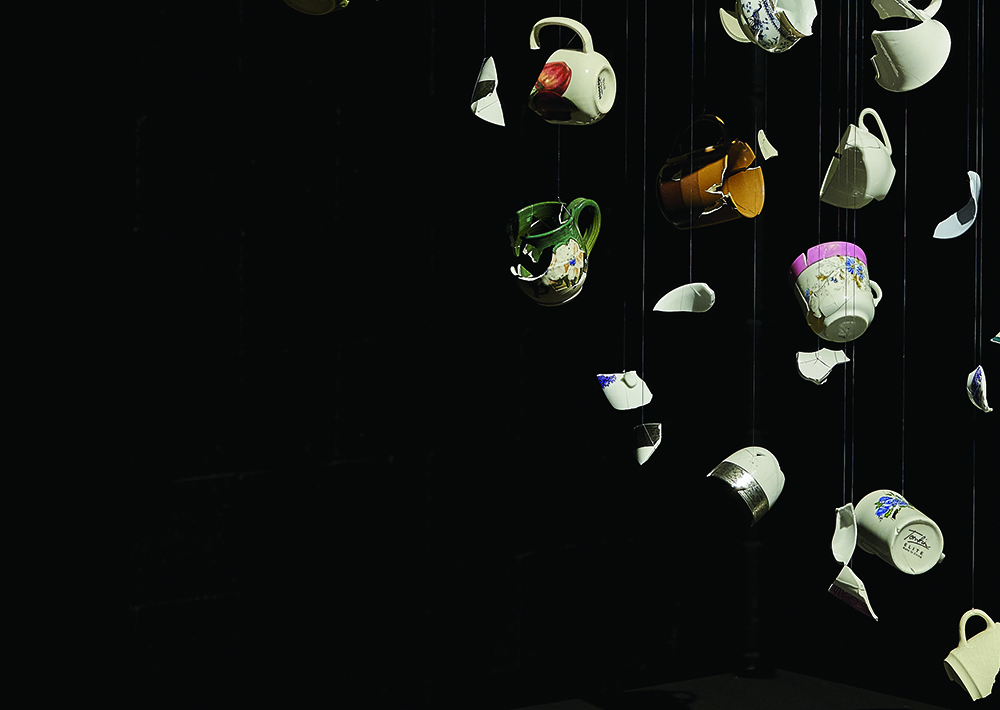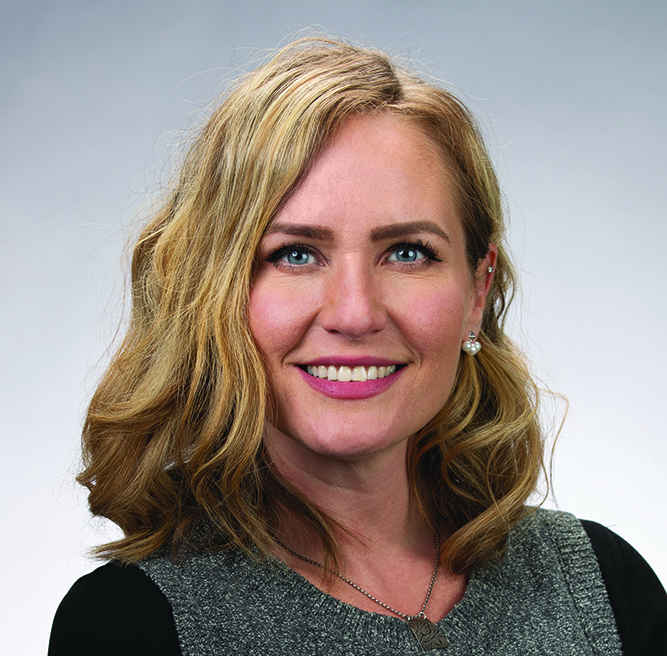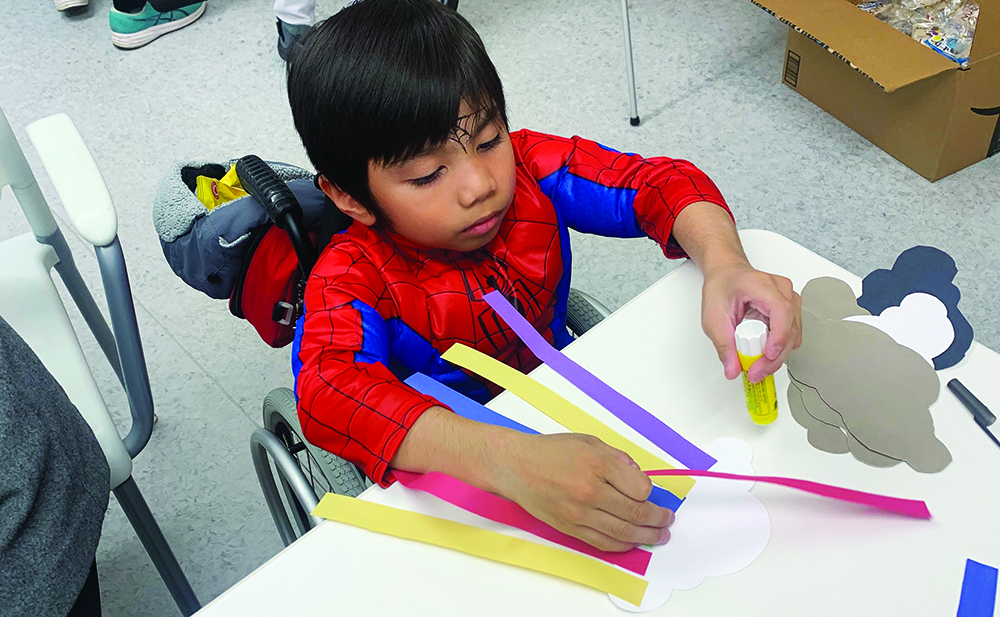

Art and science are, of course, very different disciplines. But Dr. Mandy Archibald, assistant professor at the College of Nursing, sees a relationship between them.
She is working toward wider acceptance in the health sciences of art as a vehicle for research participants to express themselves, and for researchers to disseminate findings.
“Research evidence can be difficult to understand and is sometimes presented in ways that aren’t very engaging,” she says. “It can also touch on topics of a sensitive nature. Art is a great way to communicate complex scientific research findings because people learn and experience things in different ways.”
Archibald grew up in Edmonton and started her working life as a full-time artist in various media, including oil painting, sculpture and film. In 2003, she took a college anatomy course, aiming to improve her drawing skills.
“That’s what first got me interested in nursing as a career,” she remembers.
After graduating with a bachelor’s degree from the University of Alberta, she worked for a few years as a pediatric nurse. She then entered the U of A master’s program with an eye to becoming a nurse practitioner, but switched to the doctoral program at the urging of her advisor, UM alum Dr. Shannon Scott [BN/94, MN/98].
“She knew I had an arts background and saw the potential for me to bring my interests together,” Archibald says.
After earning her PhD in 2016, Archibald spent three years at the University of Adelaide in Australia as a Canadian Institutes of Health Research (CIHR) postdoctoral fellow. There she co-created a multimedia art exhibition based on research that explored older adults’ perspectives on frailty.
One of the works, titled (Dis)Repair, was an installation made from smashed ceramic teacups that were imperfectly glued back together and suspended in the air as a group. The piece evoked a sense of resilience, recovery and community, speaking in a very different “voice” than a research paper would have.
Archibald joined the UM nursing faculty in 2019 and is also a researcher with the Children’s Hospital Research Institute of Manitoba (CHRIM).
She has published articles about arts-based health research in journals such as the International Review of Qualitative Research, BMC Pediatrics and the International Journal of Qualitative Methods.
In the latter, she and her co-author wrote: “Arts-based health research offers unique opportunities to integrate evidence of patients’ lived experience with other forms of research evidence to improve understanding and knowledge translation.”

Archibald’s current work is largely focused on arts-based research through “living labs.”
“Living labs are a diverse concept. The idea comes from the European vision of ‘smart homes’ that support aging-in-place initiatives. We have adapted them for use as knowledge-exchange platforms for families navigating the complexities of chronic illness and disability.”
One of her virtual labs was established in partnership with Specialized Services for Children and Youth, a Winnipeg facility that serves children with disabilities and special needs. The project received a Rady Innovation Grant from UM, as well as funding from the George and Fay Yee Centre for Healthcare Innovation and Research Manitoba.
The virtual lab is a place for family members of children with neurodiversity to chronicle their lived experiences in an online story repository.
Archibald aims to have 30 to 40 family members take part by submitting stories monthly. The stories contributed so far include a mother’s reflections on struggling to get her largely non-verbal child dressed for winter and a father’s account of his challenges with improving his son’s co-ordination so he can participate in the sports that he loves.
“The stories reflect how parents navigate the often-invisible challenges of day-to-day life, what has helped them overcome these challenges, and what their key lesson was,” Archibald says.
After the six-month data collection period, the living lab’s research team will communicate these narratives (without identifying personal details) through potential media such as interactive illustrated storybooks, research-based theatrical performances, animated whiteboards or documentary films.
“Determining the best medium is based on what we’re trying to communicate, the audience, the capacity of the artistic form, and input from those with lived experience,” the professor says.
Archibald was honoured with the 2022 Terry G. Falconer Memorial Rh Institute Foundation Emerging Researcher Award in the health sciences category, recognizing her research to improve the care of youth and families with chronic illness and disabilities.
She currently has significant funding for two projects based at CHRIM, both involving arts-based approaches and the living lab concept.
One of the projects, supported by $300,000 from the Sick Kids Foundation and the CIHR, involves creating an interactive online platform for kids, teens and young adults with youth-onset Type 2 diabetes.
The project aims to have 50 youth respond to questions about their mental health and wellness needs and experiences. They’re also asked to submit an artwork, such as a drawing, to further illustrate their responses. The team will then collaborate on creative ways to communicate the resulting insights.
Creatively sharing the stories gathered through living labs amplifies participants’ voices and helps them connect with others, Archibald says.
“It also gives us an opportunity to impact how research is done, and to influence how care is provided. Reflecting families’ experiences is so critical.”
BY ALAN MACKENZIE
